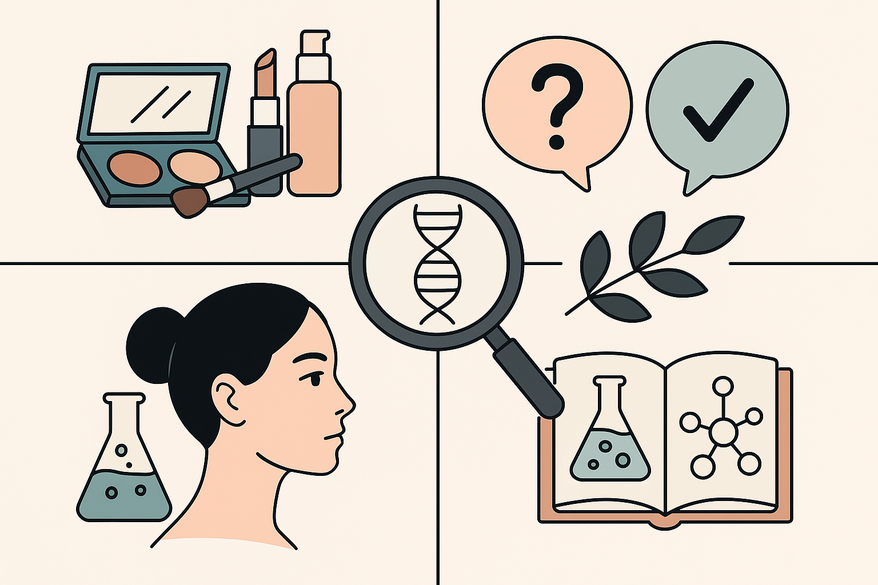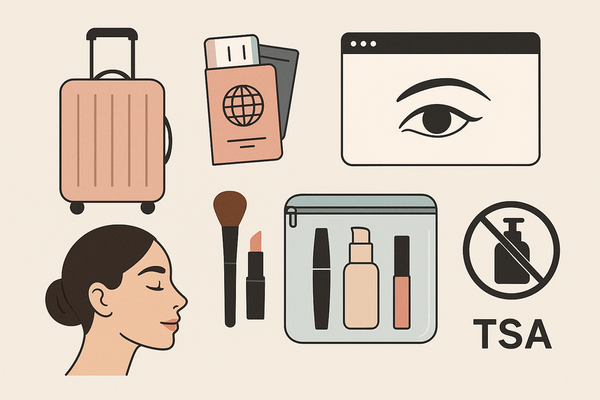Makeup Facts vs Fiction: Debunking Beauty Myths with Science
Explore makeup facts vs fiction and debunk beauty myths with scientific insights to make informed choices. Discover truths about cosmetics, ingredients, and more.

Estimated reading time: 8 minutes
Key Takeaways
- Many beauty myths persist due to marketing hype and outdated beliefs.
- All cosmetics include a period-after-opening (PAO) icon—never ignore expiry dates.
- Modern formulas often hydrate and protect skin with active ingredients like hyaluronic acid and antioxidants.
- “Natural” does not always mean safer; safety depends on testing, concentration, and formulation.
- Verifying peer-reviewed sources and reading labels are essential to separate fact from fiction.
Table of Contents
- Section 1: A Brief History of Cosmetics & the Rise of Misinformation
- Section 2: Top Makeup Myths You Probably Believe
- Section 3: Scientific Facts About Makeup
- Section 4: What’s Inside Your Makeup: Ingredients 101
- Section 5: What Industry Pros Say
- Section 6: How to Separate Makeup Facts vs Fiction Yourself
- Section 7: Wrapping Up: Makeup Facts vs Fiction
Section 1: A Brief History of Cosmetics & the Rise of Misinformation
Cosmetics have evolved over millennia—and so has the confusion around them.
- Ancient Egypt: Kohl eyeliner and ochre lip stains.
- Greco-Roman Era: Face powders made from lead and chalk.
- Renaissance: White lead–based makeups for pale complexions.
- 20th Century to Today: Foundations, BB creams, SPF blends.
Over time, product safety improved, yet myths stuck around. For usage stats and the evolution of product safety, see evolution of cosmetic safety. “Misinformation” in beauty means claims based on old data or marketing hype. Consequences include wasted money, skin irritation, and lower self-esteem. For more on skin health and self-esteem, click skin health and self-esteem.
Keywords: makeup facts vs fictionSection 2: Top Makeup Myths You Probably Believe
Below are the most common makeup myths and where they come from. Let’s see what science really says.
1. Myth: “Makeup doesn’t expire.”
- Shelf Life: Cosmetics display a period-after-opening (PAO) icon—6M, 12M, 24M.
- Risk: Old products harbor bacteria, leading to skin infections or eye irritation.
- Origin: Outdated labels and marketing that ignores microbial growth.
- Source: M+ Makeup Myths Explained
- Roots: Cultural belief in product “timelessness” and brand silence on expiry—see video excerpt.
2. Myth: “Makeup suffocates skin and always causes breakouts.”
- Shelf Life: Look for “non-comedogenic” labels and PAO icons.
- Risk: Using expired or greasy formulas improperly can clog pores, but many modern cosmetics include skin-friendly ingredients.
- Origin: Early heavy, oil-based creams; no distinction between comedogenic and non-comedogenic.
- Source: M+ Makeup Myths Explained
- Roots: Traditional beauty routines and sensational marketing—see cultural explanation.
3. Myth: “Natural products are always safer.”
- Shelf Life: Natural preservatives may degrade faster—always check the PAO.
- Risk: Plant extracts and essential oils can trigger allergies or sensitivity.
- Origin: Green marketing and “chemical-free” buzzwords.
- Source: M+ Makeup Myths Explained
- Roots: Misinterpreted science and brand messaging—see video.
4. Myth: “Pumping the mascara wand keeps it fresh.”
- Shelf Life: Mascara generally lasts 3–6 months after opening (PAO icon).
- Risk: Pumping introduces air and bacteria, leading to eye infections.
- Origin: Effort to add more product to the brush; marketing that downplays hygiene.
- Source: M+ Makeup Myths Explained
- Roots: Behavioral habit turned “hack,” lacking any scientific backing—see video.
Section 3: Scientific Facts About Makeup
Here’s a side-by-side comparison of myths and the research-backed reality:
| Myth | Fact | Source |
|---|---|---|
| Makeup never expires | All cosmetics can harbor microbes past their PAO date; follow the 6M, 12M, or 24M icons. | M+ Makeup Myths Explained |
| Makeup suffocates skin | Many modern formulas include hyaluronic acid, niacinamide, and antioxidants; they can hydrate and protect. | M+ Makeup Myths Explained |
| More makeup = more confidence | Studies show light makeup or “skinimalism” often boosts self-esteem more than heavy coverage. | PMC Study on Self-Esteem |
| Natural = Safe | Safety depends on testing, concentration, and formulation—not origin. | Myth-Busting Video, M+ Makeup Myths Explained |
Section 4: What’s Inside Your Makeup: Ingredients 101
Understanding formulation helps you separate myth from reality.
-
Safe, Well-Tested Ingredients
- Silicones: Dimethicone for smooth texture and moisture barrier.
- Pigments: Iron oxides and titanium dioxide for color and SPF boost.
- Preservatives: Phenoxyethanol and parabens (within approved limits) to prevent microbes.
- Regulations: FDA in the U.S., EU CosIng database ensure safety.
-
Potentially Harmful Components
- Fragrance allergens: Isoeugenol, limonene—look for “fragrance-free” if sensitive.
- Unregulated colorants: Some imported dyes may lack safety data.
- Concentration thresholds: Check warnings for high-potency actives; consult dermatology sites for allergen lists.
-
Debunking “Chemical-Free”
- Every substance is a chemical; safety equals dose plus context.
- “Chemical-free” claims often ignore that water and minerals are chemicals too.
- Source: Myth-Busting Video
-
How to Read Labels
- Spot the PAO/expiration icon (jar symbol).
- Scan the ingredient list in order of concentration.
- Use EWG Skin Deep, CosIng, or the FDA database to verify safety and function.
Section 5: What Industry Pros Say
Dr. Jane Smith, board-certified dermatologist, shares her view:
“Non-comedogenic makeup can be safe even for acne-prone skin if used correctly and replaced on time.”
Prof. Alan Chen, cosmetic chemist featured on Refinery29’s “Fact or Fiction,” notes:
“‘Natural’ doesn’t always mean safer; synthetic antioxidants and preservatives often match or exceed botanical sources in safety.”
Section 6: How to Separate Makeup Facts vs Fiction Yourself
- Verify studies via PubMed or Google Scholar for peer-reviewed evidence.
- Look for independent seals: “non-comedogenic,” “dermatologist-tested,” “clinically proven.”
- Compare ingredient lists with EWG Skin Deep or EU CosIng.
- Avoid anecdotal or viral beauty trends without cited research.
- Replace products by the PAO or expiration date.
Section 7: Wrapping Up: Makeup Facts vs Fiction
- Debunked myths: expired makeup, suffocation, natural infallibility, mascara pumping.
- Facts: Modern cosmetics often hydrate, protect, and include active skincare ingredients.
- Ongoing vigilance: Always check sources, read labels, and stay current on formulation science.
Call-to-action: Share myths you’ve heard or your own experiences in the comments—let’s keep separating fact from fiction together.
FAQ
Q1: Can I use old makeup if it looks and smells fine?
A: No—expired products harbor bacteria that can cause skin and eye infections. See common makeup myths explained.
Q2: Does makeup always cause acne?
A: Not necessarily—non-comedogenic and dermatologist-tested formulas reduce breakouts; improper removal or expired products are the usual culprits. See common makeup myths explained.
Q3: Are natural cosmetics always better?
A: Safety depends on testing and concentration, not origin; plant extracts can trigger allergies just like synthetic compounds. See Myth-Busting Video and common makeup myths explained.




